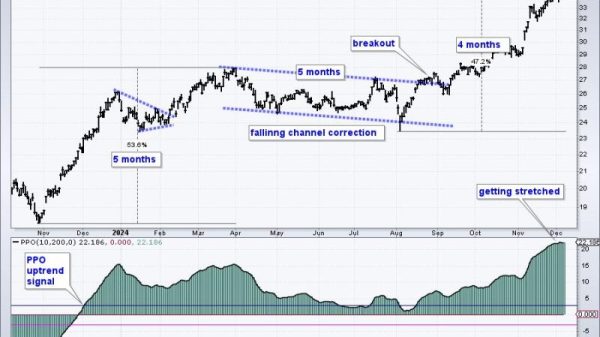Market breadth indicators are often considered a crucial aspect of technical analysis in financial markets. These indicators provide insights into the overall health and direction of the market by analyzing the performance of a wide range of assets or securities. One of the most commonly used indicators to gauge market breadth is the Advance-Decline Line.
The Advance-Decline Line is a technical analysis tool that tracks the number of advancing and declining assets in a specific market over a period of time. By comparing the number of advancing assets to declining assets, analysts can determine the overall strength or weakness of the market. A rising Advance-Decline Line suggests broad-based market participation and positive sentiment, while a declining line indicates weakening breadth and potential market weakness.
In recent times, some analysts have expressed concerns about the signals being given by market breadth indicators, particularly the Advance-Decline Line. As major stock indices reach new all-time highs, market breadth indicators have shown signs of divergence, raising questions about the sustainability of the current bull market.
Historically, divergence between market indices and breadth indicators has often preceded market corrections or reversals. This pattern suggests that while the major indices may be trending higher, underlying market breadth may be weakening, indicating that the rally is not as robust as it may seem.
One argument supporting these concerns is that a narrow group of stocks, particularly large-cap technology companies, have been driving much of the market gains, while a significant number of other stocks have been struggling or even declining. This disparity in performance can lead to a false sense of market strength if not supported by broad-based participation.
Moreover, the unprecedented levels of central bank intervention and stimulus measures in response to the COVID-19 pandemic have distorted traditional market dynamics. The influx of liquidity into financial markets has propelled asset prices higher across the board, masking underlying weaknesses in certain sectors and individual stocks.
While market breadth indicators like the Advance-Decline Line provide valuable insights into market sentiment and health, they are not infallible predictors of market tops or bottoms. Divergence between market indices and breadth indicators should be viewed as a warning sign rather than a definitive signal of an impending market downturn.
Investors and traders should exercise caution and conduct thorough analysis of both market breadth indicators and macroeconomic factors to make informed decisions. Keeping a close eye on market breadth can help identify potential shifts in market dynamics and provide valuable insights for adjusting investment strategies in response to changing market conditions. As always, prudent risk management and a diversified portfolio remain key principles for navigating turbulent market environments.


























